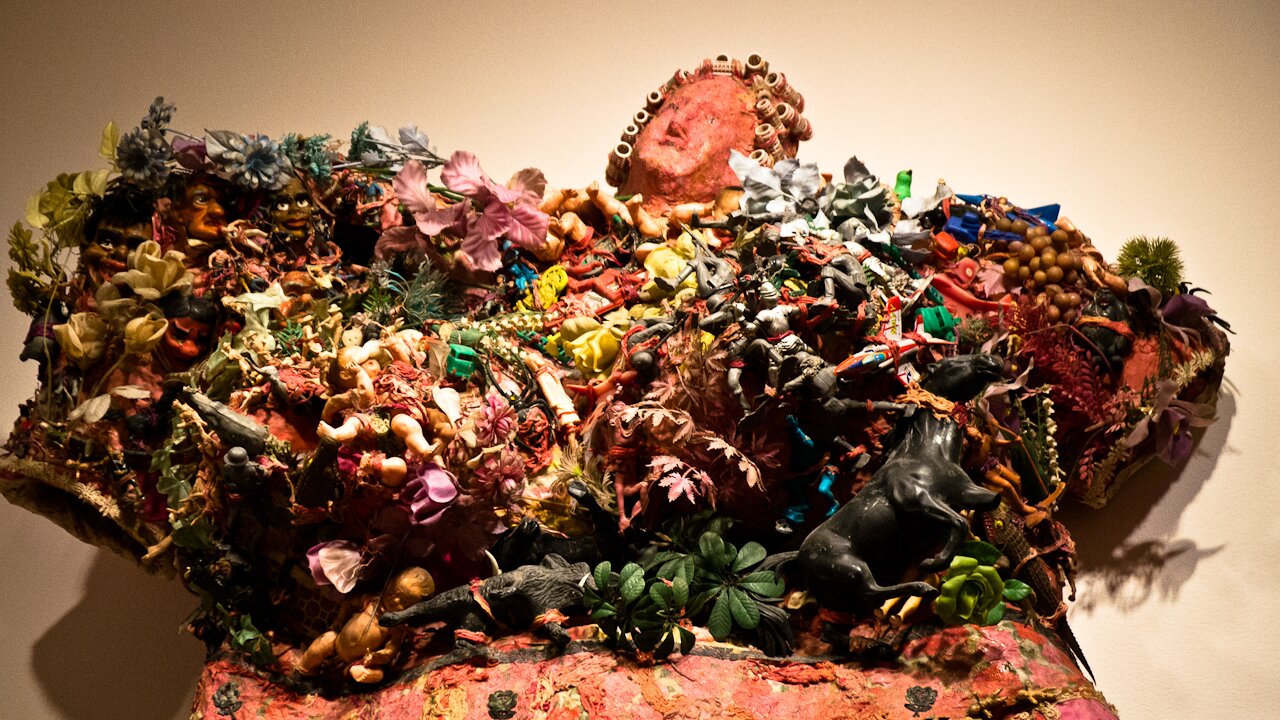“I guess I’m aware of the irony of me standing up here,” said Charles Wright, Chair of Seattle Art Museum’s Board, as he introduced their newest major exhibit, Elles, Women Artists from the Centre Pompidou, Paris (through January 13, 2013). But maybe a woman might feel conflicted introducing an all-women show, he suggested, whereas he could simply praise what he saw.
SAM’s Maryann Jordan, by contrast, opened by saying, “Women are taking over,” a play on the exhibit’s tagline, “and I’m not conflicted at all!”
Pompidou president Alain Seban said the exhibit was “a manifesto,” that it wasn’t just a show, but the creation of a new energy. (It ran for 18 months at the Pompidou, attracting 2.3 million visitors.) He thought it would do well in “forward-looking” Seattle.
Figuring out how to talk about Elles, its whys and wherefores, is one thing. The Pompidou and SAM don’t want to stick a feminist label on the exhibit, which is fair in that not all the artists represented would have called themselves feminists. But neither can I swallow the statement that this all-women show demonstrates that “women versus men is, ultimately, no longer important.” (To paraphrase Lawrence Summers, there are sexists, look around–and it’s still very much a live issue for them.)
But before you get caught up in competing discourses, see the exhibit: as City Arts says, it’s “an almost mind-numbing wealth of work.” It may be especially enlightening for men, in that a good deal of it has been produced without them in mind. Suzanne Valadon’s La Chambre bleue (1923) plays explicitly with expectations of eroticized feminine beauty, yes, but it is a gorgeous work to spend time with nonetheless.
Valadon’s work is fronted by Eleanor Antin’s video “The King” (1972), in which Antin beards herself, trims it into shape–this is called (in some circles) “performing gender.” That’s an example of the way an intellectual jargon manages to tidy up art’s ragged edges, contextualizing a work so you can situate it. But you can also just watch an artist applying a beard to her face, and let your own associations develop.
“Now we’ll move over into surrealism,” said my guide, during our preview, in a portentous phrasing. You could spend entire fall afternoons with Dorothy Tanning’s A Very Happy Picture (1947), but it’s not easy to tell when you’ve left the surrealists, really. A pervasive, evolving theme in this exhibition is the investing of an object (representatively or not, often the body) with a disquieting thrum of feeling: O’Keefe’s skull, Sherman’s portraits, Messager’s fake sparrows.
By the end, there in one unavoidable conclusion you may reach on the show’s raison d’être, one that springs from the number of rooms that you’re cautioned are for mature audiences only, as if you’re about to step into Cinemax After Dark. Again and again, it turns out that maturity is required to view a woman’s naked body the way a female artist has presented it. Or that constructions of vulvas or phalluses might leave children blinded or traumatized. (NB: Sigalit Landau’s “Barbed Hula” video is something you might want a little warning for.)
In addition to the Centre Pompidou exhibit, SAM has created Elles: SAM, which is a remarkable curation in its own right, showing off two Georgia O’Keefes; works by Joan Mitchell, Lee Krasner, and Helen Frankenthaler; a new installation by Victoria Haven, and hallucinatory, penis-sprouting pieces by Yayoi Kusama. A host of artistic partners from around Seattle have joined SAM for Elles: Seattle as well–SAM’s Jordan says that almost every single day between October 11 and the end of the exhibit there will be an Elles event somewhere in town, at Cupcake Royale, at SIFF Cinema, at the Frye and Henry, at Velocity Dance. See the full list here.









